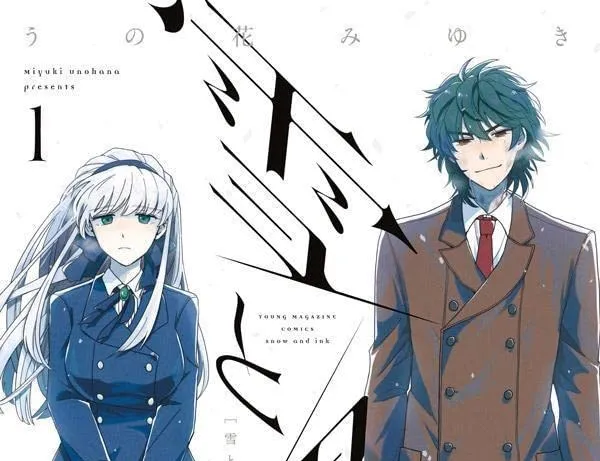Kyoraku Shunsui’s Bankai: A Stage for Sorrow and Strategy in Bleach

Kyoraku Shunsui Bankai: Within the vibrant tapestry of zanpakuto in the Bleach universe, few stand as unique and potent as Kyoraku Shunsui’s Katen Kyōkotsu: Karamatsu Shinjū. This enigmatic Bankai, unveiled during the climactic Thousand Year Blood War arc, transcends mere destructive power, weaving a poignant tale of love, loss, and the ever-present shadow of regret. To delve into Karamatsu Shinjū is to embark on a journey through Shunsui’s inner turmoil, understanding the weight of his past and the cunning brilliance he wields on the battlefield.
Unveiling the Stage: Shadows and Sorrow

Unlike the flashy transformations of other Shinigami, Shunsui Bankai manifests subtly. Shadows stretch like grasping fingers, swallowing the surrounding space into a chilling void. This isn’t just an aesthetic choice; it reflects the Bankai’s true nature – a warped reality fueled by Shunsui’s deepest emotions. The “stage” becomes a prison, mirroring the emotional cage he carries within.
The Players Take Their Roles: Katen, Kyōkotsu, and the Opponent

The essence of Karamatsu Shinjū lies in its narrative structure. Shunsui becomes the playwright, crafting a tragic love story with himself, Katen (the male zanpakuto spirit), Kyōkotsu (the female spirit), and his opponent as the unwilling actors. This narrative twist underscores the power of perception and manipulation, showcasing Shunsui’s mastery of strategy.
Act I: Shadows and Lies – The Illusions Begin

The shadows aren’t merely decorative; they serve as extensions of Katen and Kyōkotsu, capable of inflicting both physical and psychological damage. As the opponent attacks, the shadows distort, reflecting their deepest fears and anxieties. This initial phase is a psychological assault, sowing doubt and disorientation, making the enemy question reality itself.
Act II: Shifting Tides – Deception and Manipulation
As the opponent grapples with their distorted perception, Shunsui manipulates his Bankai’s narrative. Katen and Kyōkotsu engage in a deadly dance, mirroring the tragic love story that unfolds. The opponent becomes entangled in their emotions, caught between sympathy and the need to survive. This masterful weaving of reality and fiction disrupts their focus, creating openings for Shunsui to strike.
Act III: Inescapable Sorrow – The Bankai’s True Power
The final act reveals the true terror of Karamatsu Shinjū. The love story reaches its tragic climax, mirroring the pain and regret that haunt Shunsui. This emotional resonance creates a shared pain: any injury inflicted on Kyōkotsu is reflected on the opponent, amplifying their suffering. It’s a cruel reflection of Shunsui’s burdens, forcing his foes to confront their vulnerabilities.
Beyond the Stage: The Weight of Regret
The true brilliance of Karamatsu Shinjū lies not just in its power, but in its representation of Shunsui’s character. The tragic love story reflects his own past mistakes, the burden of his brother’s death, and the execution of his sister-in-law. By forcing his opponent to experience a fraction of his pain, he grapples with his demons.
Shunsui’s Gamble: Power at a Price
Despite its immense potential, Karamatsu Shinjū isn’t without drawbacks. Using it puts allies at risk, trapping them within the Bankai’s distorted reality. This self-sacrificing aspect further highlights Shunsui’s compassionate nature, willing to bear the burden himself to protect those he cares about.
A Bankai Unlike Any Other: Legacy and Impact
Kyoraku Shunsui Bankai is a testament to the depth and complexity of Bleach’s zanpakuto system. It transcends mere combat, delving into the psyche of its wielder, weaving a narrative of loss, regret, and ultimately, acceptance. Karamatsu Shinjū isn’t just a tool for destruction; it’s a stage for confronting his past, a manifestation of his pain and his unwavering resolve. By understanding its intricate mechanics and emotional core, we gain a deeper appreciation for Shunsui Kyoraku, the man who wields its tragic beauty.
Kyoraku Shunsui Bankai: FAQs
Q: What is the name of Kyoraku Shunsui’s Bankai?
A: Kyoraku Shunsui Bankai is called Katen Kyōkotsu: Karamatsu Shinjū, which translates to “Flower and Crazy Bone: Pine-Blossom Shinjū”.
Q: How does the Bankai work?
A: Karamatsu Shinjū creates a distorted reality based on a tragic love story. The shadows represent Katen and Kyōkotsu, who inflict physical and psychological damage on the opponent. Injuries dealt to Kyōkotsu are reflected onto the opponent, amplifying their suffering.
Q: What are the different stages of the Bankai?
A: The Bankai is typically described as having three stages:
- Act I: Shadows and Lies: Illusions and psychological attacks distort the opponent’s perception.
- Act II: Shifting Tides: The narrative unfolds, manipulating the opponent’s emotions and creating openings for attack.
- Act III: Inescapable Sorrow: The tragic climax inflicts shared pain on the opponent, mirroring Shunsui’s regret.
Q: What are the weaknesses of the Bankai?
A: While powerful, Karamatsu Shinjū has drawbacks:
- Allies are trapped within the distorted reality.
- Using it puts a heavy emotional burden on Shunsui.
- It may not be effective against opponents immune to illusions or pain.
Q: What are some memorable moments where Shunsui used his Bankai?
A: Notably, Shunsui unleashed Karamatsu Shinjū against Sternritter Lille Barro, where its psychological manipulation and shared pain proved effective. However, its true potential remained unfulfilled due to Lille’s unique abilities.
Q: How does Kyoraku’s Bankai compare to others in Bleach?
A: Unlike many flashy offensive Bankai, Karamatsu Shinjū focuses on manipulation and deception. It stands out for its unique narrative structure and emotional depth, reflecting the character’s personality and past.
Q: What is the significance of the Bankai’s name and design?
A: The name evokes themes of love, death, and sacrifice, reflecting the tragic story within the Bankai. The design, with its flowing shadows and melancholic atmosphere, reinforces the emotional weight of its power.
Q: Are there any interesting theories about the Bankai?
A: Some fans speculate that Karamatsu Shinjū represents not just one love story, but multiple layers of regret from Shunsui’s past, adding further depth to its symbolic meaning.
Q: Is the Bankai’s narrative always the same, or can it change depending on the opponent?
While the core elements of the tragic love story remain constant, some fans theorize that specific details might shift based on the opponent’s emotional vulnerabilities or past experiences. However, this hasn’t been explicitly confirmed in the canon.
Q: Can Kyoraku control the specific illusions and attacks within the Bankai, or are they pre-determined?
Shunsui likely possesses some degree of control over the shadows and narrative. He seems to guide the overall flow of the story, choosing moments to manipulate the opponent’s emotions or create openings for attack. However, the exact extent of his control remains unclear.
Q: Has the Bankai ever backfired or caused unintended consequences?
While not explicitly shown, the emotional burden of the Bankai could potentially overwhelm Shunsui if he uses it for extended periods. Additionally, trapping allies within the distorted reality poses risks, especially if they’re unaware of the Bankai’s mechanics.
Q: Does the Bankai have any defensive capabilities, or is it purely offensive?
While the focus is on manipulating and damaging the opponent, the shadows could offer some level of defense, redirecting attacks or obscuring Shunsui’s movements. However, the Bankai seems primarily designed for offensive tactics.
Q: Are there any hidden abilities or secrets associated with the Bankai that haven’t been revealed yet?
The full potential of Karamatsu Shinjū remains unexplored. Some fans speculate that Shunsui might possess a final, even more powerful stage or hidden techniques within the Bankai, waiting to be unveiled in future stories or adaptations.
If you want to know about The Top 10 Strongest Bankai In Bleach, Please click on the link.






